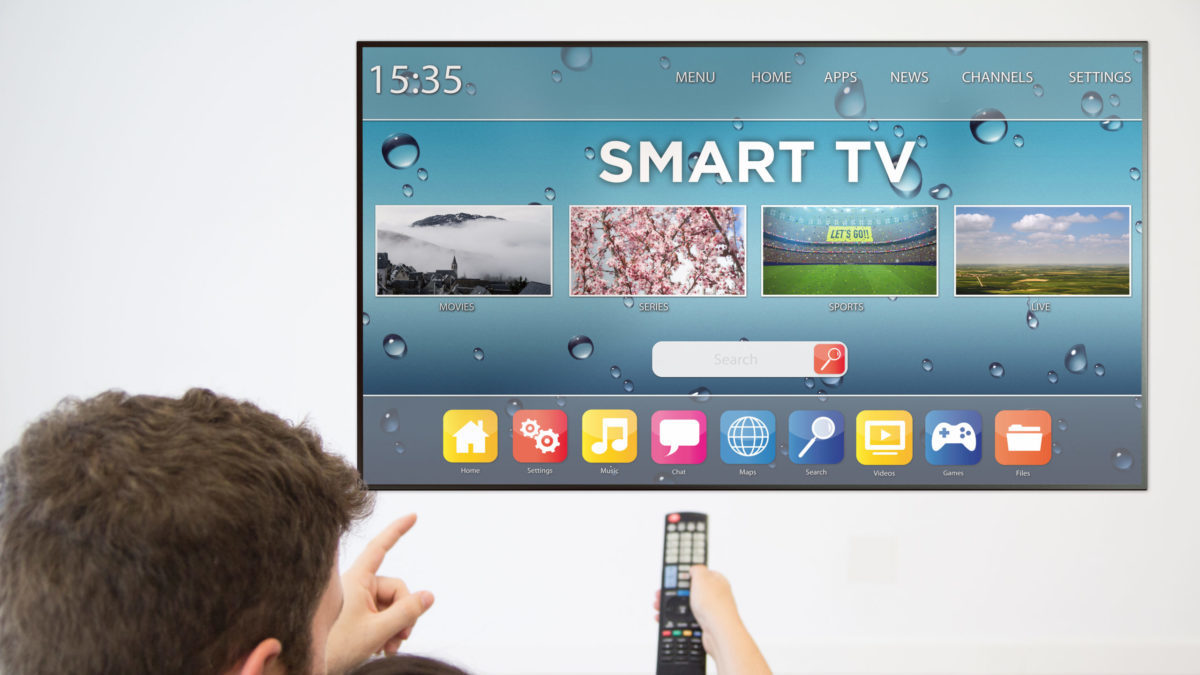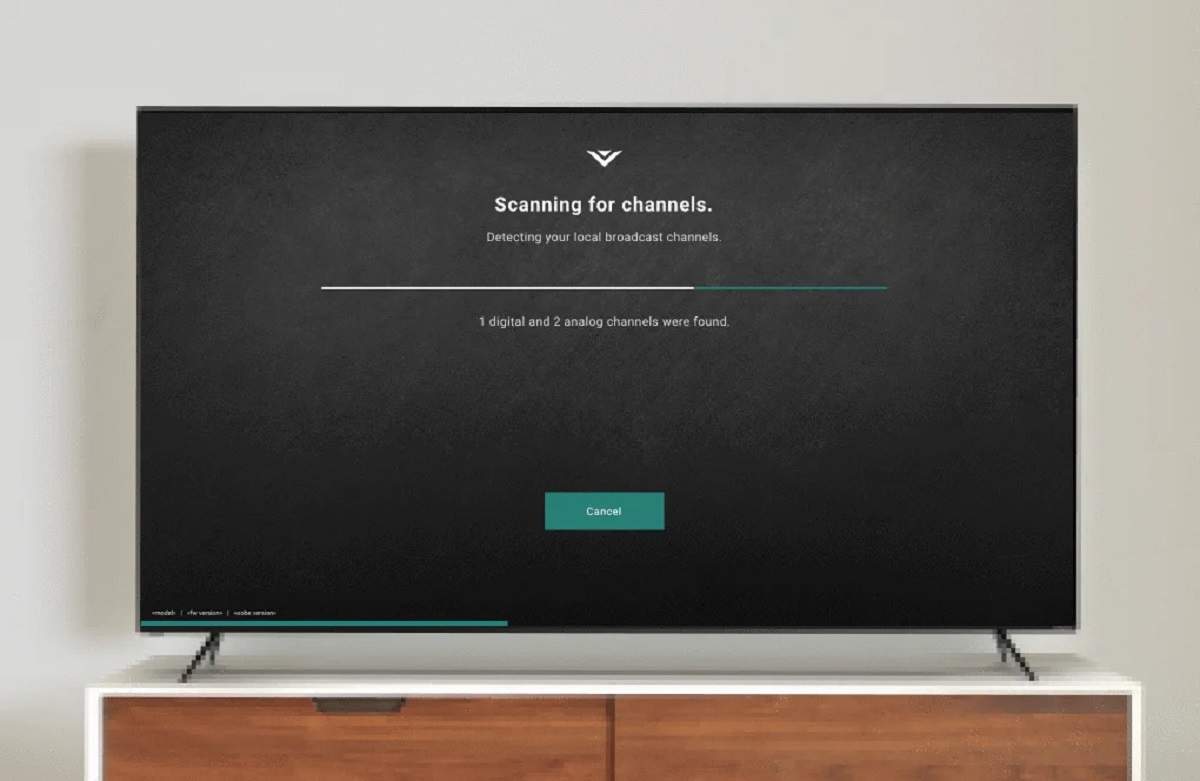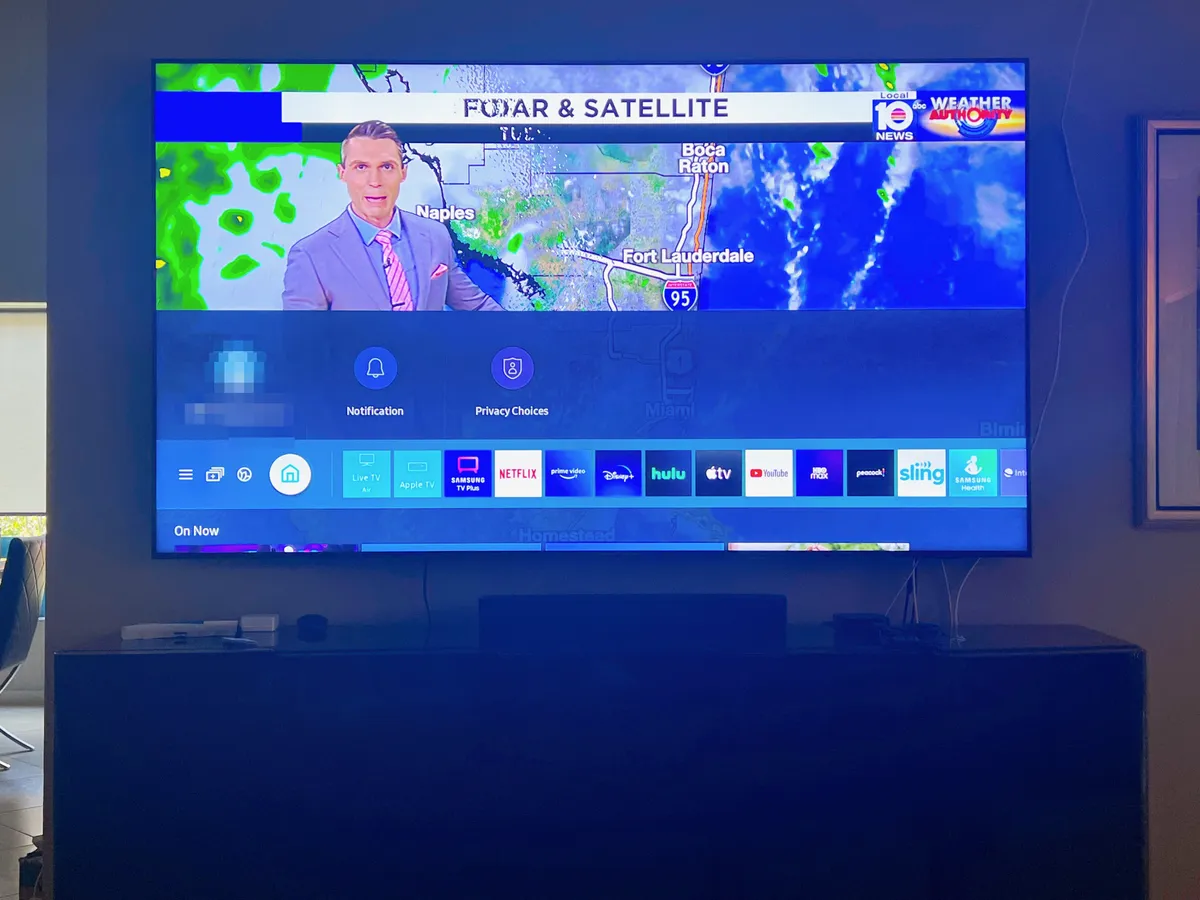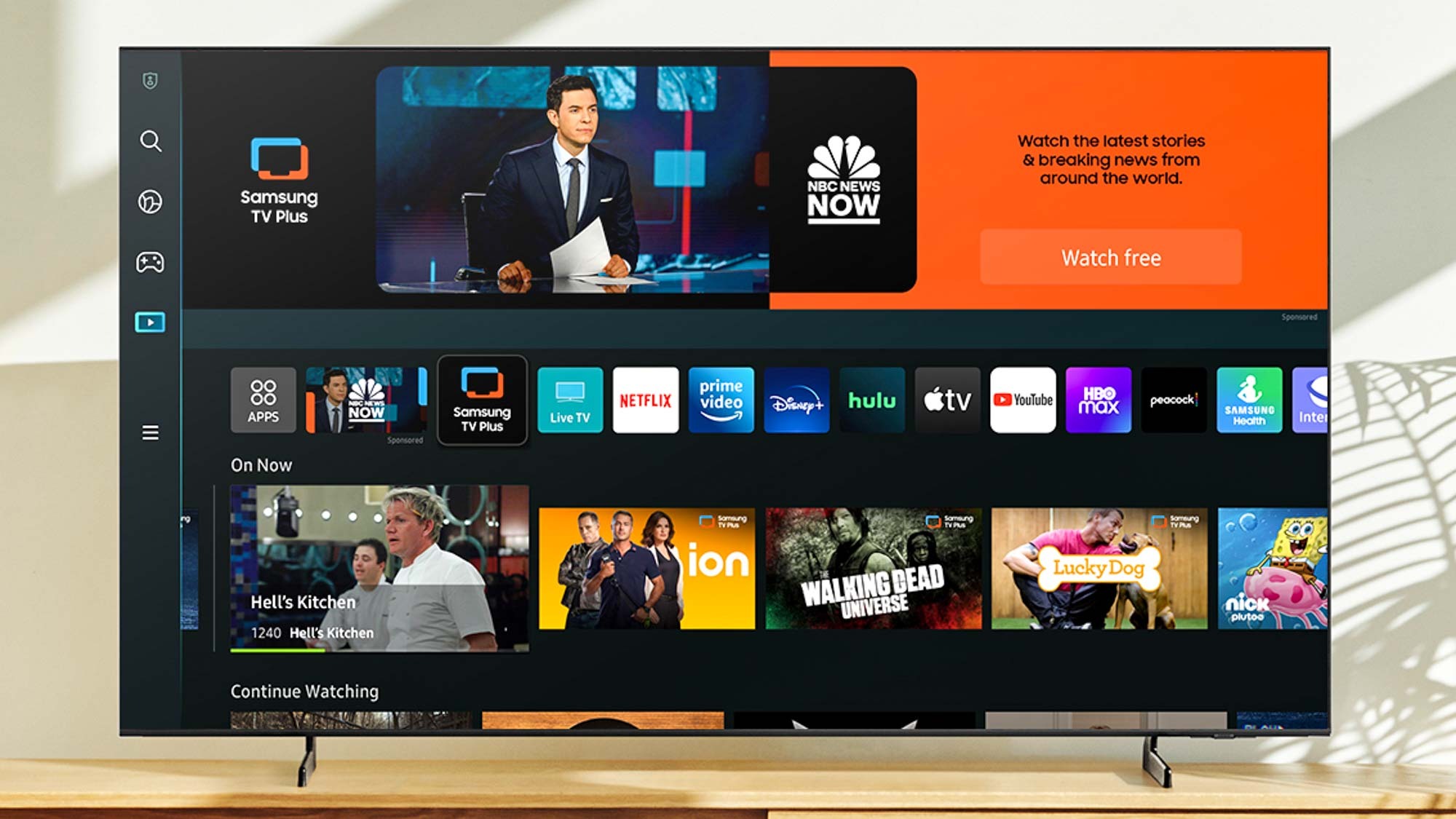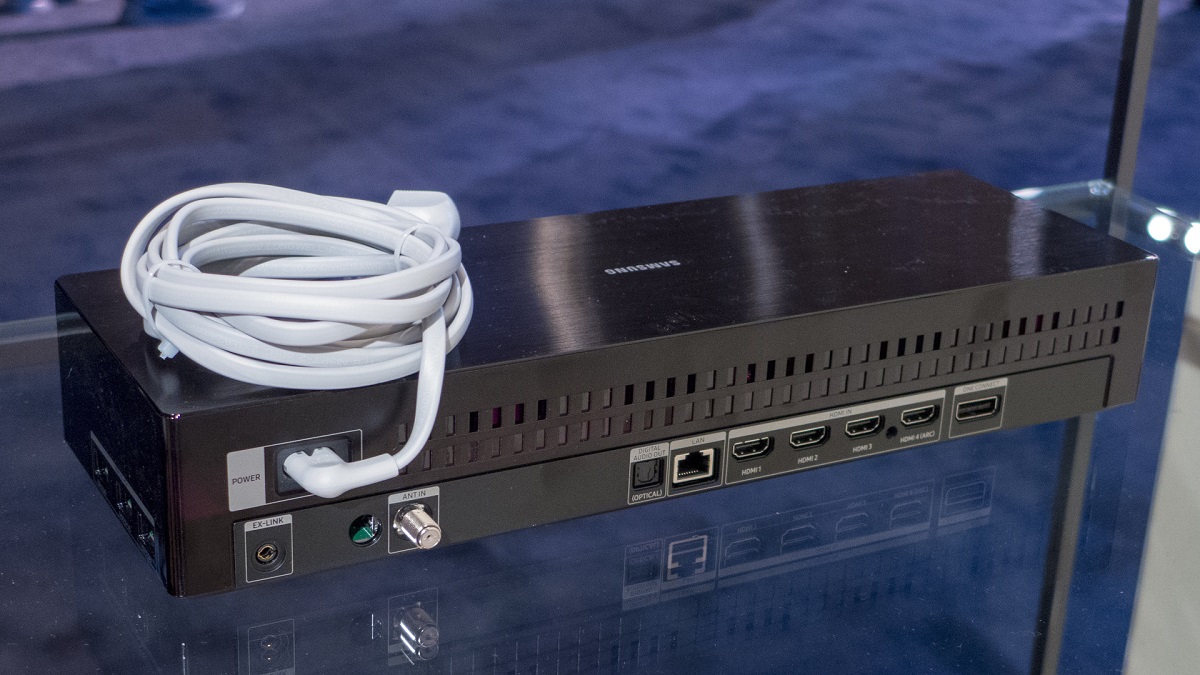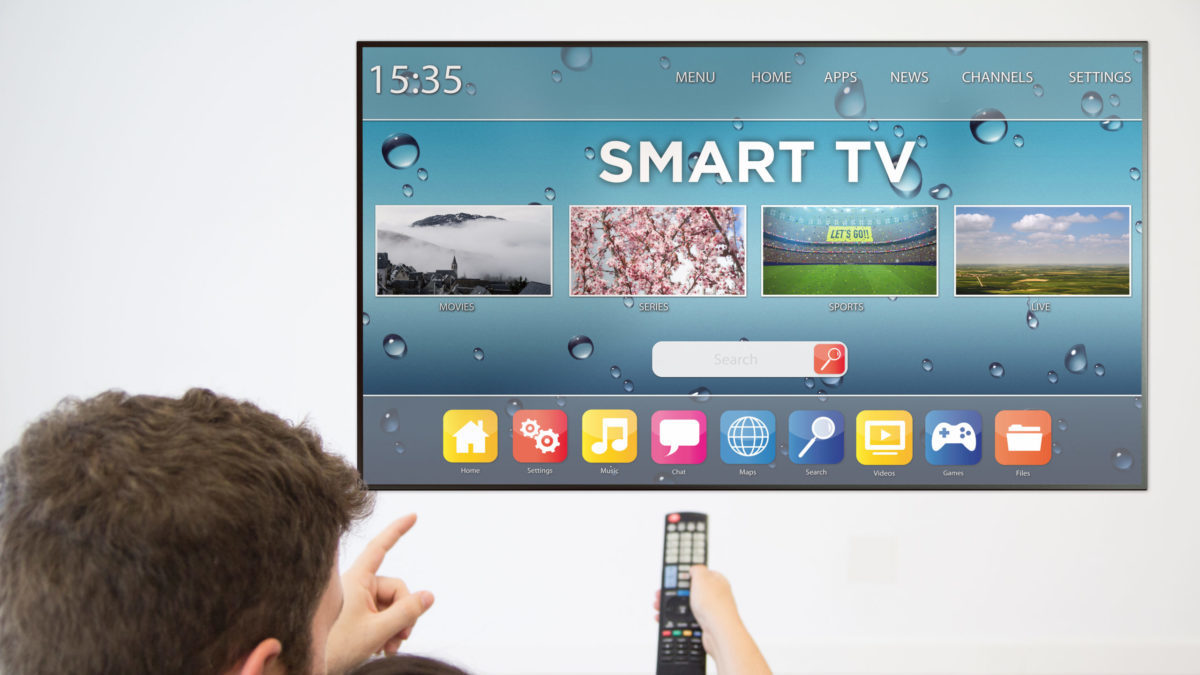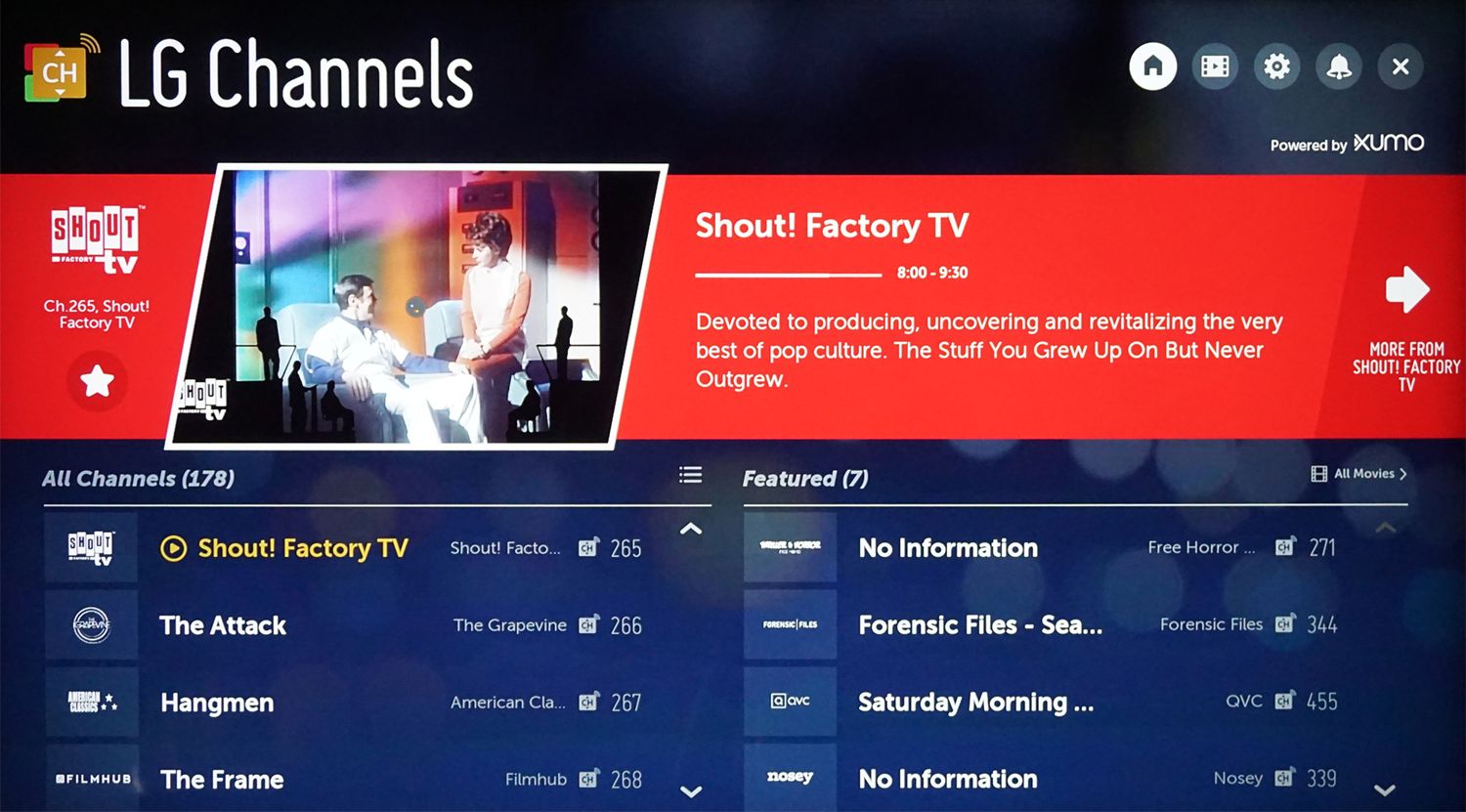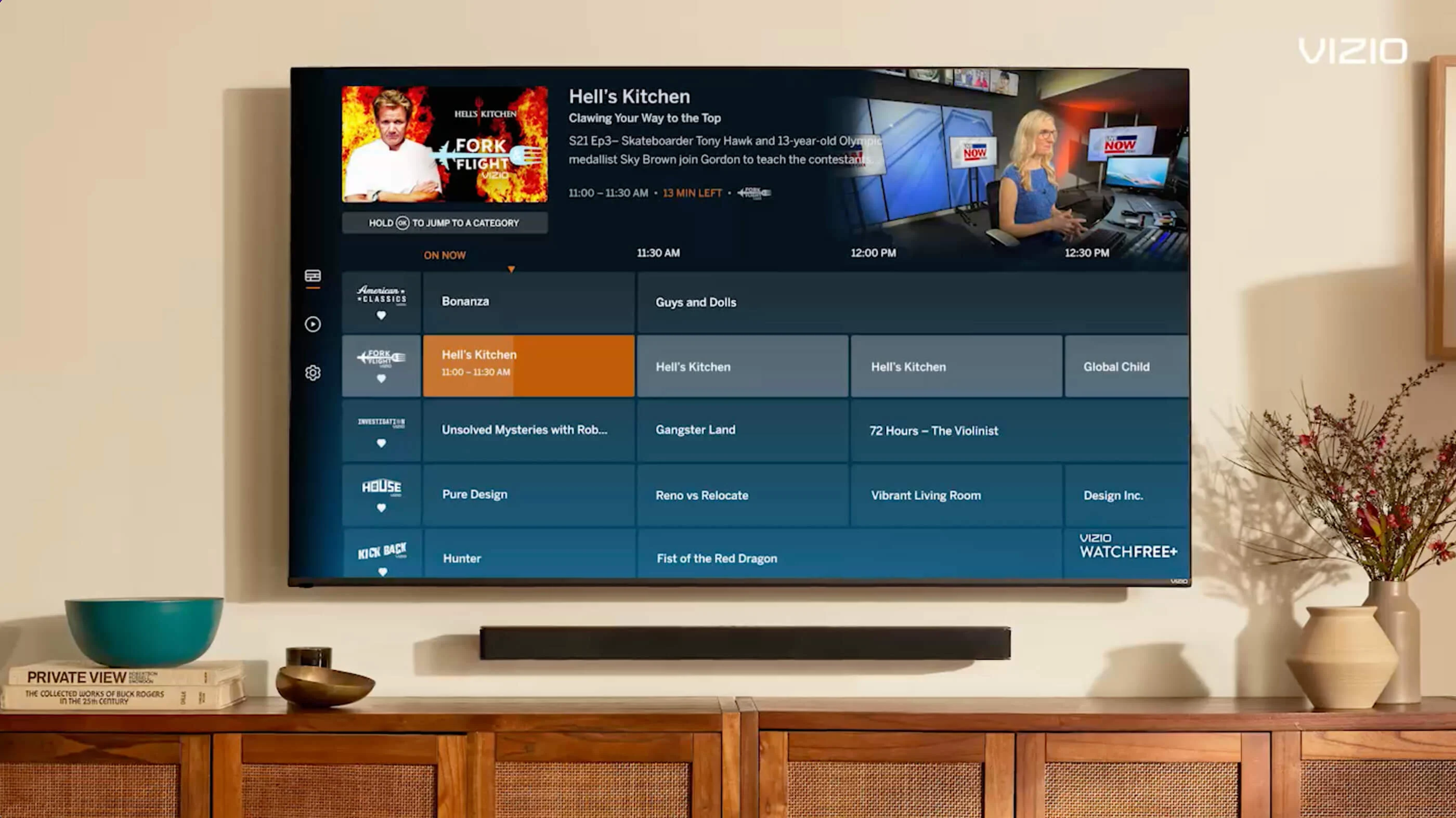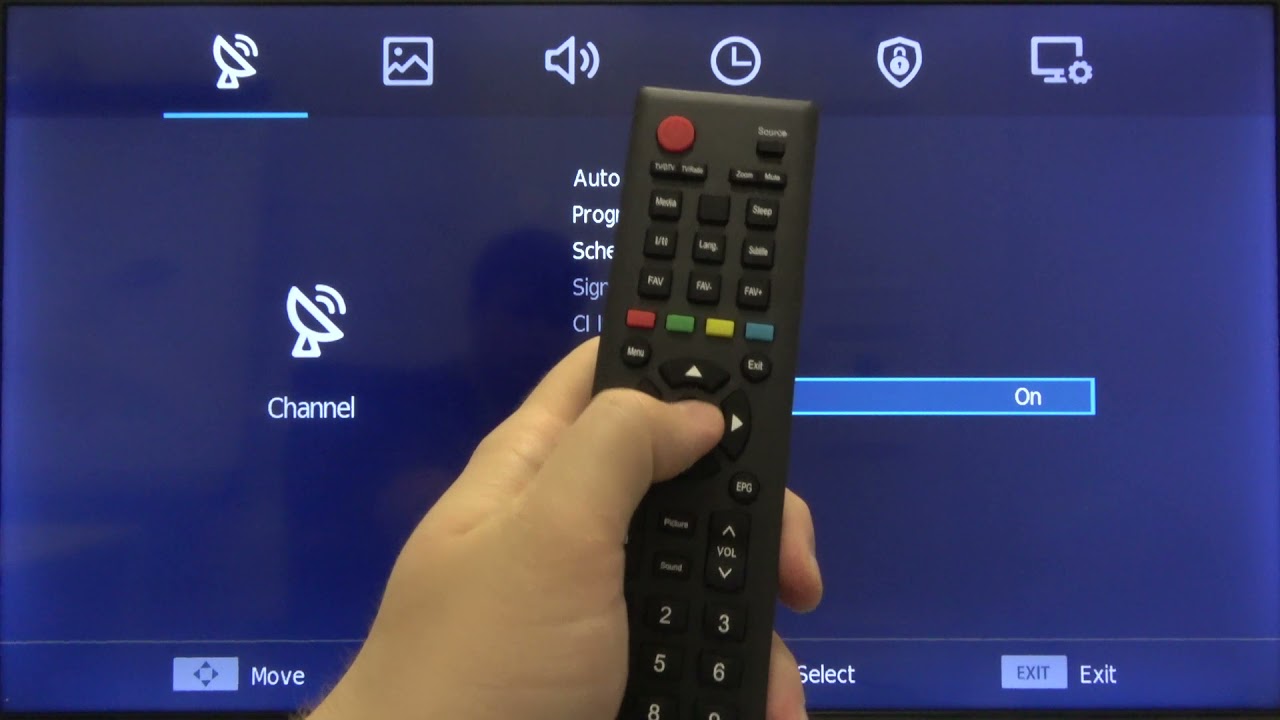Introduction
Welcome to the world of smart TVs, where you can access a world of entertainment with just a few clicks. While streaming services and on-demand content have become the norm, many people still value the convenience and reliability of local TV channels. Local channels offer news, sports, and other programming that reflects the community you live in, keeping you connected to the events and stories that matter most.
If you’re wondering how to get local TV channels on your smart TV, you’ve come to the right place. Whether you’re a cord-cutter seeking to access local content without a traditional cable or satellite subscription or simply looking to enhance your current TV setup, there are several options available to you.
In this article, we will explore different ways to get local TV channels on your smart TV, including setting up an antenna, using a digital tuner, subscribing to cable or satellite services, and streaming local channels online. We will also highlight some popular streaming services that offer local channel options and provide tips on how to enhance your local TV channel experience.
By the end of this article, you’ll have a better understanding of the various methods available to access local TV channels on your smart TV, allowing you to choose the option that best suits your needs and preferences.
Understanding Local TV Channels
Before diving into the different ways to get local TV channels on your smart TV, it’s important to have a basic understanding of what local TV channels are. Local channels are broadcast networks that provide content specific to a particular area or region. These channels typically include major broadcast networks such as ABC, CBS, NBC, and FOX, as well as local affiliates that offer locally-produced news, weather, sports, and other programming.
Local TV channels play a crucial role in keeping communities informed and entertained. They provide local news coverage, local events, and content that reflects the interests and needs of the community. From local sports games and high school events to community shows and cultural programs, local channels offer a diverse range of content.
One of the advantages of accessing local channels is that they are available over-the-air, meaning you can pick them up with an antenna without the need for a cable or satellite subscription. This makes them a cost-effective option for those who want to cut the cord and rely on free, over-the-air broadcasts.
Local channels are typically transmitted in high definition (HD), providing viewers with a crisp and clear picture quality. They are also regulated by the Federal Communications Commission (FCC) in the United States, ensuring that they meet certain technical and programming standards.
It’s worth noting that the availability of local channels may vary depending on your location. While major network affiliates are usually widely available, smaller local channels may have limited coverage in certain areas. However, with the advancements in technology and the rise of streaming services, it’s now possible to access local channels from any location.
Now that you have a better understanding of what local TV channels are and their importance, let’s explore the different ways you can get them on your smart TV.
Different Ways to Get Local TV Channels on Your Smart TV
There are several options available to get local TV channels on your smart TV, depending on your preferences and setup. Let’s explore some of the most common methods:
- Antenna Setup and Installation: One of the simplest and most cost-effective ways to access local TV channels is by setting up an antenna. By connecting an antenna to your smart TV’s antenna input, you can pick up over-the-air broadcasts from local channels. This allows you to enjoy free access to local news, sports, and other programming without the need for a cable or satellite subscription. Installing an outdoor or indoor antenna will depend on your location and proximity to broadcast towers.
- Using a Digital Tuner: If your smart TV doesn’t have a built-in tuner or lacks an antenna input, you can still access local channels by using a digital tuner. A digital tuner connects to your smart TV via HDMI or USB and picks up the over-the-air signals from local channels. This provides a convenient solution for accessing local TV channels without the need for an antenna.
- Cable and Satellite Subscription: Another way to get local TV channels is by subscribing to cable or satellite services. By signing up for a cable or satellite package that includes local channel offerings in your area, you can access a wide range of local programming along with additional channels and features. However, it’s important to note that this option usually involves a monthly subscription fee and may require additional equipment such as a cable box or satellite dish.
- Streaming Local TV Channels Online: With the rise of streaming services, you can now access local TV channels online. Many streaming platforms offer live streaming of local channels, giving you the opportunity to watch your favorite local programming on your smart TV. Services like Hulu Live TV, YouTube TV, and Sling TV provide access to local channels, including news, sports, and other content.
Whether you choose to go the antenna route, utilize a digital tuner, subscribe to cable or satellite services, or stream local channels online, there’s a solution out there to fit your needs and preferences. The method you choose will depend on factors such as your location, budget, and desired channel offerings.
Now that we’ve explored the different ways to access local TV channels on your smart TV, let’s dive deeper into each option to better understand how to set them up and make the most of your local channel experience.
Antenna Setup and Installation
If you want to get local TV channels on your smart TV without any subscription fees, setting up an antenna is the way to go. Here’s a step-by-step guide on how to set up and install an antenna for your smart TV:
1. Determine the type of antenna: There are two main types of antennas – outdoor and indoor. Outdoor antennas are typically mounted on the roof or the side of the house, providing better reception and a wider range of channels. Indoor antennas, on the other hand, are more compact and can be placed near the TV. Choose the type of antenna that suits your location and preferences.
2. Research your local broadcast towers: To get the best reception, it’s important to know the location of the broadcast towers in your area. This information can be easily found online by using websites or apps that provide signal information based on your zip code or address. Knowing the direction and distance of the towers will help you position your antenna accurately.
3. Position the antenna: For outdoor antennas, mount it in a high and clear location, pointing towards the direction of the broadcast towers. Adjust the antenna to achieve the best signal strength. Indoor antennas can be placed near a window or higher up on a wall, away from obstructions such as thick walls or metal objects that can interfere with the signal.
4. Connect the antenna to your smart TV: Use the coaxial cable that comes with the antenna to connect it to the antenna input on your smart TV. Make sure the cable is securely connected to both the antenna and the TV to prevent any signal loss.
5. Scan for channels: Once the antenna is connected, go to the menu settings on your smart TV and perform a channel scan or auto-tune. This will allow your TV to search for and save the available local channels in your area. The scanning process may take a few minutes, so be patient.
6. Fine-tune the antenna: Depending on the signal strength and the number of channels you receive, you may need to fine-tune the antenna position to optimize the reception. This may involve adjusting the angle or direction of the antenna slightly and rescanning for channels until you achieve the best results.
7. Enjoy local TV channels: Once the scanning process is complete and you have successfully tuned in to the local channels, sit back, and enjoy your favorite local programming on your smart TV without any additional costs.
Setting up an antenna for your smart TV is a budget-friendly option for accessing local TV channels. It allows you to enjoy free, over-the-air broadcasts and provides a reliable source of local news, sports, and other programming. By following these steps, you can have a seamless antenna setup and installation process, enhancing your smart TV viewing experience.
Using a Digital Tuner
If your smart TV doesn’t have a built-in tuner or lacks an antenna input, you can still access local TV channels by using a digital tuner. Here’s how:
1. Check compatibility: Before purchasing a digital tuner, ensure that it is compatible with your smart TV. Look for tuners that support your TV’s input ports such as HDMI or USB. Compatibility information can usually be found in the product specifications or on the manufacturer’s website.
2. Purchase a digital tuner: Once you’ve determined compatibility, purchase a digital tuner from a reputable electronics store or online retailer. Be sure to read customer reviews and compare prices to find the best option for your needs and budget.
3. Connect the digital tuner to your smart TV: Depending on the type of tuner you’ve chosen, connect it to your smart TV using the appropriate cable, such as HDMI or USB. Follow the instructions provided with the tuner for the specific connection process.
4. Set up the digital tuner: Once connected, follow the prompts on your smart TV’s screen to set up the digital tuner. This may involve scanning for channels or inputting your location to help the tuner find the available local channels in your area.
5. Scan for channels: After the setup process is complete, initiate a channel scan using the options provided by the digital tuner or through your smart TV’s settings menu. This will allow the digital tuner to search for and save the local channels that it can pick up over-the-air.
6. Fine-tune the signal: If the digital tuner detects weak or pixelated signals for certain channels, you may need to adjust the position of the tuner or the placement of the antenna it is connected to. Experiment with different positions and rescan for channels until you achieve the best signal quality.
7. Enjoy local TV channels: Once the scanning and tuning process is complete, you can now enjoy local TV channels on your smart TV. Use your TV’s remote control to navigate through the saved channels and enjoy local news, sports, and other programming without the need for a traditional cable or satellite subscription.
Using a digital tuner is a great alternative for accessing local TV channels on a smart TV without an antenna input. By following these steps, you can easily set up and utilize a digital tuner to enjoy free over-the-air broadcasts and the convenience of accessing local programming.
Cable and Satellite Subscription
If you prefer a more comprehensive TV experience with access to a wide range of channels, including local TV channels, subscribing to cable or satellite services is a viable option. Here’s what you need to know:
1. Research available providers: Start by researching the cable and satellite providers in your area. Look for companies that offer local channel packages along with other desired channels and features. Compare pricing, subscription plans, and customer reviews to determine the best provider for your needs.
2. Select a package: Once you’ve chosen a provider, select a package that includes the local channels you desire. Most providers offer different tiers of packages, ranging from basic plans that include local channels and popular networks to more premium packages that include additional sports, movies, and specialty channels.
3. Contact the provider: Reach out to the chosen provider either by phone or through their website to inquire about pricing and availability. Discuss your specific needs and verify that the package you’re interested in includes the local channels you want.
4. Schedule installation: If you’re a new subscriber, schedule a convenient time for the provider to install the necessary equipment, such as a cable box or satellite dish. An installation technician will ensure that everything is set up correctly and will test the signal to ensure proper reception.
5. Accessing local TV channels: Once the installation is complete, you can access local TV channels by switching to the appropriate channel on your smart TV. Your cable or satellite provider will provide a channel guide or on-screen menu that allows you to navigate through the available channels.
6. Enjoy additional features: Cable and satellite subscriptions often come with additional features, such as On-Demand programming, DVR capabilities, and interactive channel guides. Take advantage of these features to enhance your viewing experience and have more control over what and when you watch.
7. Monthly subscription: Keep in mind that cable and satellite subscriptions involve monthly fees. Make sure to pay your bills on time to avoid service interruptions. If you’re unsatisfied with your current package or provider, you can explore other options or negotiate with your provider for better deals.
Subscribing to cable or satellite services provides a convenient and reliable way to access local TV channels along with a wide range of other programming. It’s important to weigh the costs and benefits before making a decision, as this option typically involves monthly fees and may require additional equipment. However, the added channel options and extra features can significantly enhance your smart TV experience.
Streaming Local TV Channels Online
In recent years, streaming services have revolutionized the way we watch TV. With the rise of internet connectivity and smart TVs, it’s now possible to stream local TV channels online. Here’s how you can access local TV channels through streaming:
1. Choose a streaming service: There are several streaming services available that offer live access to local TV channels. Popular options include Hulu Live TV, YouTube TV, Sling TV, and AT&T TV. Research these services to determine which one offers the local channels you desire along with other features that meet your needs.
2. Check availability in your area: Not all streaming services are available in every area. Before subscribing, check if the streaming service you’re interested in is available in your location. Some services may have limited availability in certain regions or may offer different channel lineups depending on your location.
3. Sign up and choose a plan: Once you’ve selected a streaming service, sign up for an account and choose a plan that includes the local TV channels you want. Most services offer different packages with varying channel lineups, so make sure to select the one that best suits your preferences.
4. Set up the streaming service on your smart TV: Download the streaming service’s app on your smart TV, or access it through a web browser if available. Sign in to your account and follow the on-screen prompts to set up the service on your smart TV.
5. Navigate and watch local TV channels: Once the streaming service is set up, use the app’s interface or menu to navigate to the local channels or live TV section. This will allow you to access the available local TV channels and watch them in real-time, just like you would with traditional cable or satellite TV.
6. Additional features and perks: Streaming services often provide additional features such as cloud DVR, on-demand content, and the ability to stream on multiple devices simultaneously. Take advantage of these features to customize your viewing experience and watch your favorite local TV shows and events on your own schedule.
7. Monthly subscription: Keep in mind that streaming services typically require a monthly subscription fee. Ensure that your account is up to date with payments to continue enjoying uninterrupted access to local TV channels.
Streaming local TV channels online gives you the flexibility to watch your favorite local programming on your smart TV without the need for a cable or satellite subscription. It offers a convenient and customizable viewing experience, allowing you to access live local channels along with additional features to enhance your entertainment options.
Popular Streaming Services for Local TV Channels
When it comes to streaming local TV channels online, there are several popular streaming services to choose from. These services provide access to a variety of local channels along with additional features. Here are some of the most popular streaming services for local TV channels:
- Hulu Live TV: Hulu Live TV offers a wide range of local channels, including ABC, CBS, NBC, and FOX, in many areas. With their subscription, you can access live and on-demand content from popular networks, along with Hulu’s extensive library of shows and movies.
- YouTube TV: YouTube TV provides access to local channels in many areas, offering live streaming of ABC, CBS, NBC, and FOX, among others. The service includes unlimited DVR storage and allows for streaming on multiple devices simultaneously.
- Sling TV: Sling TV offers two base packages – Sling Blue and Sling Orange – that include local channels in select markets. With Sling Blue, you can access local channels from FOX and NBC, while Sling Orange provides local channels from ABC in select areas. Sling TV’s packages also come with a variety of additional channels and options for customization.
- AT&T TV: AT&T TV provides local channel access through their entertainment packages. Depending on your location, you can enjoy live local channels from ABC, CBS, NBC, and FOX, as well as other popular networks. AT&T TV offers various plans and features, including DVR capabilities and on-demand content.
These streaming services offer the convenience of watching local TV channels on your smart TV without the need for a traditional cable or satellite subscription. It’s important to check the availability and channel lineup in your specific area, as the local channel options may vary depending on your location.
Each streaming service also comes with its own features and perks, such as cloud DVR storage, simultaneous streaming on multiple devices, and the ability to customize channel packages. Take the time to compare the offerings and prices of each service to find the one that best suits your preferences and budget.
With any of these popular streaming services, you can enjoy local news, sports, and other programming from your favorite local channels, all while having the flexibility to watch on your own schedule and tailor your TV experience to your liking.
Enhancing Your Local TV Channels Experience
Getting local TV channels on your smart TV is just the beginning. To truly enhance your viewing experience and make the most of your local channels, here are some tips and ideas:
1. Antenna Positioning: If you’re using an antenna to access local channels, try different positions to optimize the signal reception. Experiment with the antenna’s height, direction, and placement to improve the picture and sound quality.
2. Signal Amplifiers: In areas with weak signal strength, consider using signal amplifiers to boost the signals captured by your antenna. These devices can improve reception and reduce interference, ensuring a clearer and more reliable local channel experience.
3. DVR Capabilities: Many streaming services and cable/satellite subscriptions offer DVR capabilities. Take advantage of this feature to record your favorite local shows, sports games, news broadcasts, and other programming. This way, you can watch them at your convenience and never miss out on anything.
4. Streaming Apps: Explore streaming apps that specialize in local content. Some networks may have their dedicated apps that offer live streams, exclusive local programming, and on-demand content. These apps can supplement your local TV channel lineup and provide additional options for enjoying local content.
5. Smart TV Apps: Smart TVs often come with pre-installed apps that offer access to various streaming services and digital content. Explore these apps to discover additional local channels or streaming options that may not be included in your cable or satellite subscription.
6. Social Media and Local Websites: Follow your favorite local channels and programs on social media platforms or visit their official websites. They often share exclusive content, behind-the-scenes footage, and updates about upcoming episodes or events. Engaging with these platforms can enhance your connection to the local community and provide a more immersive viewing experience.
7. Second Screen Experience: Consider utilizing a second screen, such as a smartphone or tablet, while watching local TV channels. Use it to browse additional information about the shows you’re watching, engage in social media discussions related to the content, or even use interactive apps that provide companion content for enhanced viewing.
8. Explore Local Events: Local TV channels often promote local events, such as festivals, community gatherings, or sporting events. Keep an eye out for these announcements and take advantage of the opportunity to attend these events, immersing yourself in the local culture and connecting with the community beyond the television screen.
By following these tips, you can ensure a more enjoyable and immersive experience while watching local TV channels on your smart TV. Whether it’s optimizing your antenna setup, utilizing DVR features, exploring streaming apps, or engaging with local content online, enhancing your local TV channel experience can make it even more rewarding and engaging.
Conclusion
Accessing local TV channels on your smart TV opens up a world of entertainment and keeps you connected to the news, sports, and events that matter most in your community. Whether you opt for an antenna setup, utilize a digital tuner, subscribe to cable or satellite services, or stream local channels online, there are several methods to choose from based on your preferences and budget.
Setting up an antenna provides a cost-effective way to access free, over-the-air broadcasts of local channels. Digital tuners offer a solution for smart TVs without built-in tuners or antenna inputs. Cable and satellite subscriptions provide a comprehensive TV experience, while streaming services offer convenience and flexibility in accessing local channels online.
It’s important to consider factors such as channel availability, pricing, additional features, and the specific needs of your location when deciding which method to pursue. Each option has its advantages and caters to different viewing preferences.
Once you’ve gained access to local TV channels, there are various ways to enhance your viewing experience. Experiment with antenna placement, consider signal amplifiers, take advantage of DVR capabilities, explore streaming apps and smart TV features, engage with local social media and websites, utilize second screen experiences, and immerse yourself in local events to truly make the most of your local channels.
Remember, the goal is not only to access local TV channels but also to engage with your community, stay informed about local news and events, and enjoy the diverse content offerings available through local channels.
By understanding the different methods of accessing local TV channels and implementing strategies to enhance your viewing experience, you can fully utilize the capabilities of your smart TV while staying connected to your local community.







